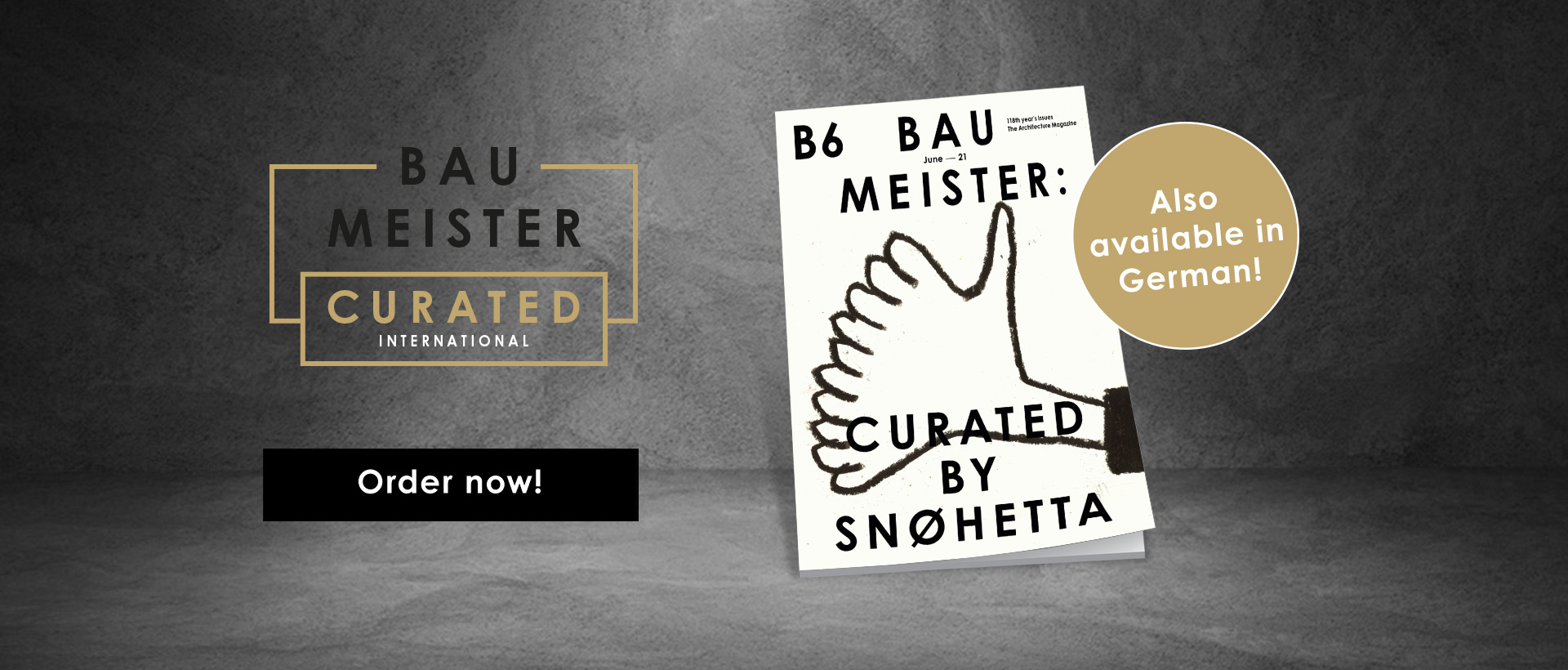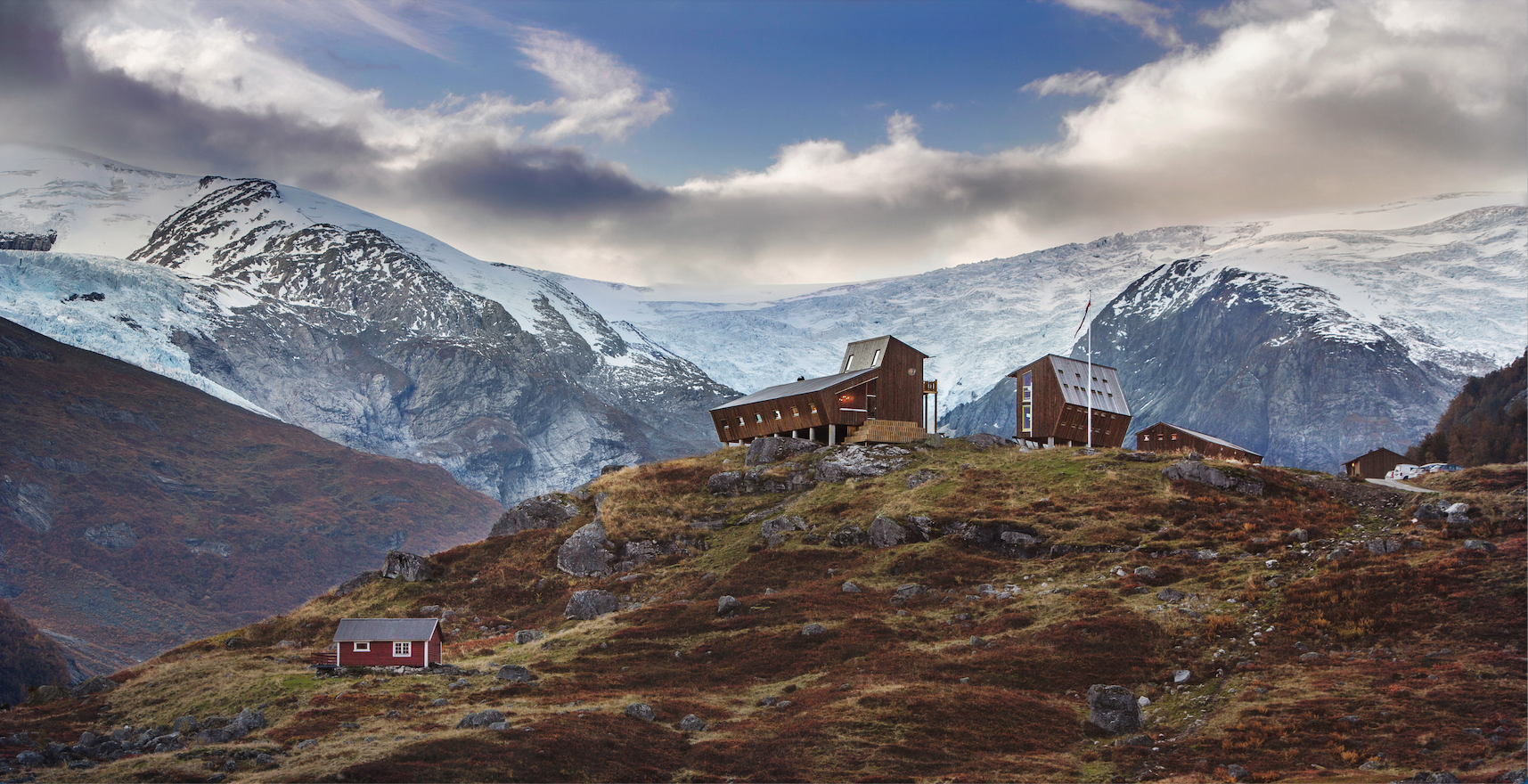MAGAZINE
VITA
INTERVIEW
Baumeister B6: Curated by Snøhetta
MAGAZINE
Snøhetta is currently influencing contemporary architecture like hardly anyone else. The office has started a new project: BAUMEISTER CURATED.
The relationship between architecture and nature is the guiding concept behind the work of Snøhetta, who named their office after a mountain in Dovrefjell National Park. Now the partners and team members of Snøhetta designed the special edition of the BAUMEISTER, which appeared on May 28, 2021. Since winning the competition for the library in Alexandria, three themes have run like a red thread through Snøhetta’s work: an intensive examination of the context in order to develop a strong concept as a basis for the design; the subject of culture – of buildings and spaces for high culture as well as for work and everyday culture; as well as sustainability – based on the focus on social aspects towards a comprehensive understanding of sustainable building. They invite various actors, employees and team members to comment not only on Snøhetta’s work, but also on current architecture, and thus contribute to a broad discourse. The artist Andrea Lüth illustrated the special edition.
Vita Snøhetta
Snøhetta is style-defining, although the interdisciplinary team has no recognizable style: the office, which now has studios in New York, Innsbruck, San Francisco, Paris, Hong Kong and Adelaide in addition to the “motherhouse” in Oslo, currently has more than just an impact on contemporary architecture someone else.
The Norwegian trademarks are the intensive examination of the context, strong concepts and an understanding of architecture as a built landscape, which often leads to a “topographical” approach: Their celebrated opera house in Oslo can be climbed like a mountain – ramps and stairs lead up to the highest point of the roof, from where there is a broad view of the city’s harbor. Time and again, Snøhetta design buildings and urban spaces that attract worldwide attention: be it their museum on Ground Zero in Manhattan, be it the redesign of Times Square or the underwater restaurant “Under” on the Norwegian coast, which offers guests a spectacular view Allowed below sea level.
The relationship between architecture and nature is the leitmotif of the work of Snøhetta, who named their office after a mountain in Dovrefjell National Park. In the course of their careers, the architects have designed both exciting and spartan shelters and shelters in the vastness of the Norwegian landscape. At the other end of the scale, the office, which now has more than 250 employees, designs projects such as the headquarters of the Le Monde Group in Paris, which has just been completed, or the new Shanghai Opera House.
Snohetta founding partner Kjetil Trædal Thorsen in conversation with BAUMEISTER editor-in-chief Dr. Fabian Peters
Fabian Peters: Kjetil, what attracted you to curating an edition of BAUMEISTER?
Kjetil Trædal Thorsen: BAUMEISTER is a very good and recognized magazine that reaches a lot of people. A stage opened up for us here to which we could invite people from our team and give them a voice. As a result, the magazine takes on different perspectives, which makes it very lively and varied. The artist Andrea Lüth also illustrated it with graphics. In my opinion, the magazine will really be a very special edition. The best thing, of course, is that you let us do it in the first place.
Fabian Peters: In your essay, which is at the beginning of the issue, you write that every single project at Snøhetta always begins with a very complex process of contextualization. I found that interesting and asked myself how you deal with the complexity that inevitably results from this extensive contextualization?
Kjetil Trædal Thorsen: If we understand context in a broader sense, it is not necessarily just about a limited understanding of a historical or cultural context, rather we can examine an aspect in detail, such as looking at a particular individual flower . It can be something weird and unique. I sometimes cite the example that, to get an idea of a freeway, most people would like to know how many cars are on that freeway.
But we might as well just concern ourselves with the question of how many red or blue cars are driving on this freeway. That means we go in a slightly different direction with our explorations and see how we would interpret a place in the future. As you know, the distinction between the subjective and the objective is difficult to make in architecture. We try to subject the objective truths in order to gradually encircle the reinvention of a place. Or we introduce a new context in which a possible future use or architecture can take place. To some extent, the complexity itself is an outcome, and we don’t necessarily have to simplify that complexity, at least not in a populist way. Rather, it is about understanding the core of these complexities so that we can in fact conceptualize some aspects of this broader, deeper, and contextual view. That is, we simplify in terms of an understanding that moves us forward so that we can develop a design for this place or location. It is an ongoing process of evaluating existing information and the context, how that context is interpreted and how it can be incorporated into the concept of a possible design.
The collective contributions of our employees make all the difference
Fabian Peters: Are architects prepared for such a task at the university? Do they learn this form of contextualization there or do you only have to teach them that when they start working for Snøhetta?
Kjetil Trædal Thorsen: It is different from university to university. We currently employ people from more than 14 countries in our various offices. One aspect of the idea is that you approach the task from different directions. If you want to understand a mountain, you have to climb it from different angles. If we now compare a project with a mountain, then that also applies. We need people who climb the mountain from different sides. Some beginners already know the deeper implications of a contextual reading and analysis, some just don’t. And not all of them have to be able to do that. It is not that everyone has to be able to do everything. Rather, the collective contributions from different directions are much more important to us, which flow together and in the end we have a design, an object or a landscape. In my opinion, this is essential and a more positive form of approach, because the reality is that sometimes it is also an advantage not to know something. Not in a naive way, but simply because certain priorities are sometimes overlaid by prior knowledge. As a result, other parts of a knowledge base are sometimes lost – a holistic understanding, for example, a deeper feel, or the ability to come to solutions through associative thinking. All of these aspects come together in a very complicated way. So, to answer the question: if someone would like to learn to understand the deeper contextual situation of a place, then of course we will teach them that. If he doesn’t have that interest, then just don’t.
You can find the complete interview at snohetta.baumeister.de.
Kjetil Trædal Thorsen (c) Snøhetta
GEORG GmbH & Co. KG
Balanstraße 73, Haus 31
81541 München
Germany
FON: +49 89 436005-0
FAX: +49 89 436005-113
E-Mail: kundenservice@georg-media.de
COPYRIGHT ©2019 GEORG GmbH & Co. KG ALL RIGHTS RESERVED



